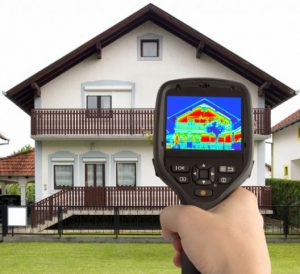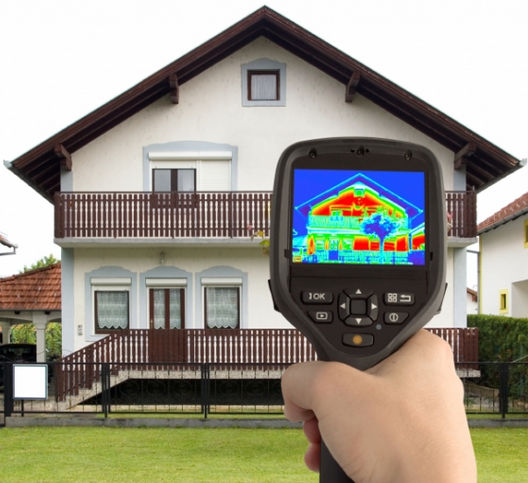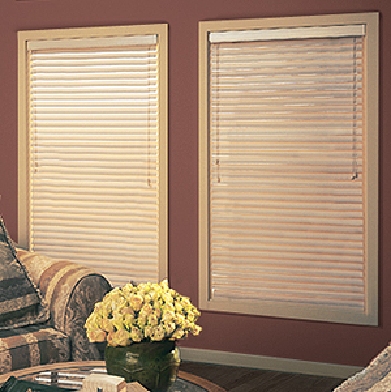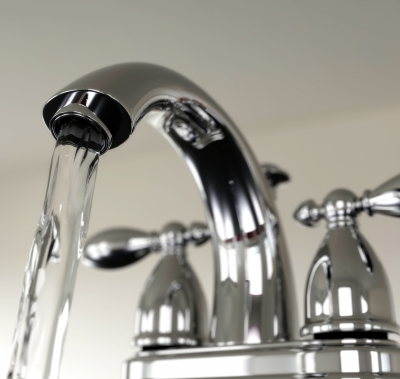As the temperature drops, your heating bills can soar. According to the U.S. Department of Energy (DOE), heating and cooling your home can account for as much as 48% of your utility bills. But a few simple steps can drastically cut your energy expenses. Here are some tips for home maintenance that will help you save money this winter.
Install a Programmable Thermostat

Seal Out Drafts
Air leaks are one of the worst energy wasters next to poor insulation. The major leak areas are around doors and windows. All doors should have intact weather-stripping for the top, bottom and sides. Open the doors, and inspect the weather-stripping for cracks, brittleness and tears. Replace where necessary, including garage doors. Check and repair caulking around window and door frames. Use expanding foam for larger gaps. Installing clear plastic film over the interior of older windows can save energy and increase comfort. On a cool day, check for air leaks around switches and receptacles. Foam insulation pads are made to seal them.
The DOE recommends:
Performing an Air Leak Test
Leaks in windows and doors are one of the biggest culprits to a chilly household. If you feel a draft, the first step in sealing it is to find the source of the leak. One of the easiest methods to do this is a simple air leak test using a match or incense sick. To do perform this test, attempt the following on a windy day or while all exhaust vents are blowing.
- First, close all your windows and doors.
- Secondly, with all safety precautions in mind, light an incense stick or a match and pass it by windows and doors. If the smoke is sucked out of the room or blown into the room, you found an air leak in your home.
- Seal any leaks with caulk or weatherstripping.
Furnace Inspections
The efficiency of your home’s furnace has a direct effect on your monthly energy bills for heating in the winter. The older the furnace, the less efficient it is. Heating systems that are less than 20 years old should be annually inspected to keep them operating at their peak efficiency before the heating season begins. Furnaces that are more than 20 years old may benefit from replacement. Factors such as the original energy efficiency of the existing system as compared to new high-efficiency furnaces should be taken into account. A new furnace may help pay for itself in energy savings.
For instance, winters in Missouri can be quite cold. January averages 29 degrees Fahrenheit in St. Louis, and the record low was set in 1905 at a whopping minus 40 degrees Fahrenheit. Technicians at Seliga Heating and Cooling have been fighting back the cold in St. Louis since 1927. They remind us that the more efficient your furnace, the less you will spend to heat your home every month and that furnace options can range from 80% efficient to over 97% efficient. So if you have an older furnace a good furnace company should do a complete a cost-benefit analysis of repairing or replacing your furnace taking into consideration the long-term savings available by getting one of the higher efficiency models.
Add More Insulation
Chances are your home has the minimum amount of insulation recommended for your climate zone if it is a newer home. Older homes may be severely lacking in insulation. If you like the inside of your home at 72 and it is 29 outside in January. That is a temperature difference of 43 degrees. The thickness of your walls is around four to six inches. If insulation is already present, there is not much you can do about wall insulation. If it is not, then blown cellulose insulation can fill wall cavities. If you have an unfinished attic space, it is easy to add fiberglass insulation that comes in rolls. This extra “blanket” in your attic can immediately begin to save you money. In most cases, you can do it yourself.
Have a Professional Home Energy Audit
Professional energy assessments generally provide a lot of detail regarding your home’s energy use. The energy auditor will do a room-by-room examination of the residence, as well as a thorough examination of past utility bills. Many professional energy assessments will include a blower door test. This test uses a special door that mounts into the frame of an exterior door. This door contains a powerful fan that pulls air out of the house, lowering the air pressure inside. This pulls air in through all unsealed cracks and openings, helping the auditor find all the leaks.

Once the house has been sealed up the auditor will scan again, to ensure that insulation has been installed correctly and no leaks remain.
You may have to spend a little bit to begin saving money in the winter. Small changes in sealing out drafts and increasing insulation can net large savings in energy costs. Adding to the thickness of attic insulation can save up to 28 percent of the cost to heat your home. Run the numbers for the cost of the products and materials to seal and insulate your home and their projected savings. If you can do most of the work yourself, you save even more.
By Kara Masterson
Kara Masterson is a freelance writer from West Jordan, Utah. She graduated from the University of Utah and enjoys writing and spending time with her dog, Max.
You might also like:
- Fight The Cold Without Draining Your Budget
- 8 Tips for Saving Money on Your Utility Bill
- Window Treatments that are Worth the Cost
- Creative Ways to Save on Monthly Expenses
- Avoid the “Money Pit” Syndrome
- Simple Ways to Save Electricity Even a Child Can Understand
- Teaching Children: Sustainability or Stewardship?
- Inflation Rate of Electricity Prices
Image 1 courtesy of ddpavumba@FreeDigitalPhotos.net
Image 2 courtesy of Department of Energy.





Pingback: BLS Releases November Unemployment Rates - UnemploymentData.com